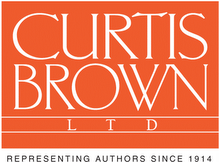{Ed. Here’s a press release that should be of interest to all aspiring novelists! Get busy polishing off that manuscript – you’ve got until April 16th to get it prepped for submission! Good luck!}
ANGRY ROBOT ANNOUNCES YET MORE OPPORTUNITIES FOR DEBUT NOVELISTS
The scheme was a huge success: nearly 1,000 submissions resulted in publishing contracts for three authors – Cassandra Rose Clarke, Lee Collins, and Lee Battersby – and the commissioning of at least six brand new novels for publication for the Angry Robot lists in 2012 and 2013.
Today, Angry Robot are announcing that Open Door will return, with a second phase running from April 16th – April 30th 2012. During this frantic fortnight the floodgates will once more be opened to admit brand new work by hopeful (and, of course, hugely talented) writers from across the globe.
This time around, the rules are slightly different. Angry Robot will only be considering submissions that meet the following genre criteria:
a) Epic Fantasy – ideally with a bit of an edge or the sort of left-field twist the Angry Robot audience has come to expect.
b) YA – any subject welcome, but must be science fiction or fantasy, and intended for a Young Adult audience, for potential publication via Angry Robot’s new Strange Chemistry imprint.
More details can be found at http://angryrobotbooks.com/opendoor
Add a Comment


![peg080707[1]](http://peg366.files.wordpress.com/2010/09/peg0807071.jpg?w=110&h=150)

 Virginia Grenier Stories for Children Publishing
Virginia Grenier Stories for Children Publishing

 You may not know this sender.
You may not know this sender.











 Presentations and reports are ways of communicating ideas and information to a group. But unlike a report, a presentation carries the speaker’s personality better and allows immediate interaction between all the participants. A good presentation has:
Presentations and reports are ways of communicating ideas and information to a group. But unlike a report, a presentation carries the speaker’s personality better and allows immediate interaction between all the participants. A good presentation has:

![peg080707[1]](http://peg366.files.wordpress.com/2010/06/peg0807071.jpg?w=110&h=150)







 Dialogue usually is a major part of your story, so making sure your dialogue works is very important. Here are some things to consider when going through that first draft.
Dialogue usually is a major part of your story, so making sure your dialogue works is very important. Here are some things to consider when going through that first draft.


 It’s a warm July day. It’s Ragbrai (pronounced Rag Bray) and means Register’s Annual Great Bicycle Across Iowa. You might ask what is Ragbrai? It is the longest and largest bicycle ride in the state of Iowa with 8500 week-long riders and 1500 daily riders which is when most families participate.
It’s a warm July day. It’s Ragbrai (pronounced Rag Bray) and means Register’s Annual Great Bicycle Across Iowa. You might ask what is Ragbrai? It is the longest and largest bicycle ride in the state of Iowa with 8500 week-long riders and 1500 daily riders which is when most families participate.
